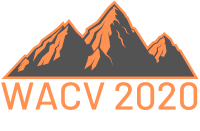-
On Scene Flow Computation of Gas Structures with Optical Gas Imaging Cameras
AbstractGas leak inspection and gas leak quantification are nowadays of high relevance within the oil and gas industry as well as in many other industrial sectors. This has been driven by safety-related issues, economic losses and the considerable climate impact caused by such unwanted gas releases. Due to the latter, the efforts for developing new and more reliable measurement techniques for detecting and quantifying greenhouse gases such as methane have increased in the recent years. In this work, a stereo camera system based on optical gas imaging cameras is used for computing dense 3D velocity information, i.e. scene flow, of escaping gas structures. Here, the optical flow, the disparity and the disparity change in likely gas image regions are computed utilizing classical variational methods. The accuracy of the applied methods and their applicability under real conditions in a biogas plant are characterized and tested. The results show that the recovered 3D gas velocity field per camera frame approaches the average 3D velocity field of the measured gas structure. The accuracy of the used method is affected, among others, when the imaged gas structures exhibit a low contrast.
Related Material
[pdf] [supp] [video][bibtex]@InProceedings{Rangel_2020_WACV,
author = {Rangel, Johannes and Schmoll, Robert and Kroll, Andreas},
title = {On Scene Flow Computation of Gas Structures with Optical Gas Imaging Cameras},
booktitle = {Proceedings of the IEEE/CVF Winter Conference on Applications of Computer Vision (WACV)},
month = {March},
year = {2020}
}
These WACV 2020 papers are the Open Access versions, provided by the Computer Vision Foundation.
Except for the watermark, they are identical to the accepted versions; the final published version of the proceedings is available on IEEE Xplore.
Except for the watermark, they are identical to the accepted versions; the final published version of the proceedings is available on IEEE Xplore.
This material is presented to ensure timely dissemination of scholarly and technical work.
Copyright and all rights therein are retained by authors or by other copyright holders.
All persons copying this information are expected to adhere to the terms and constraints invoked by each author's copyright.

